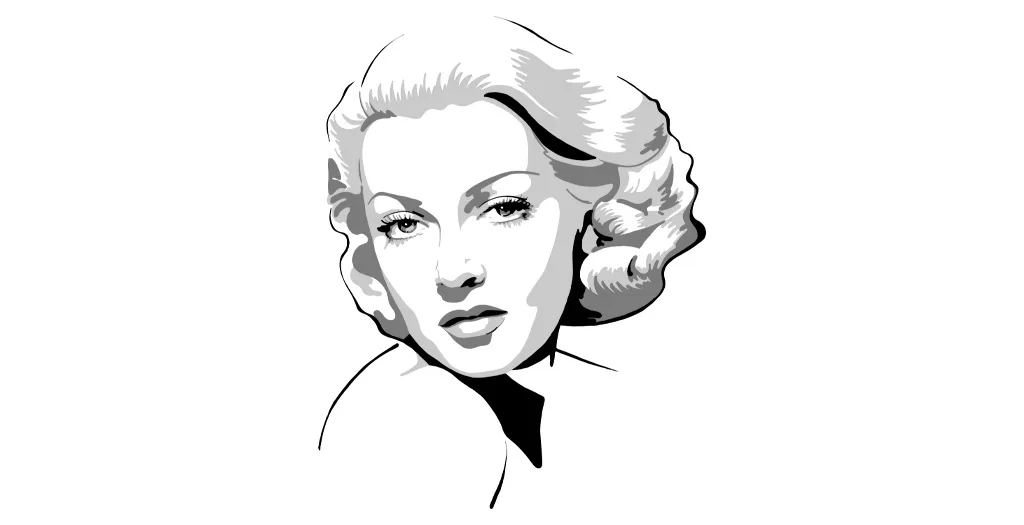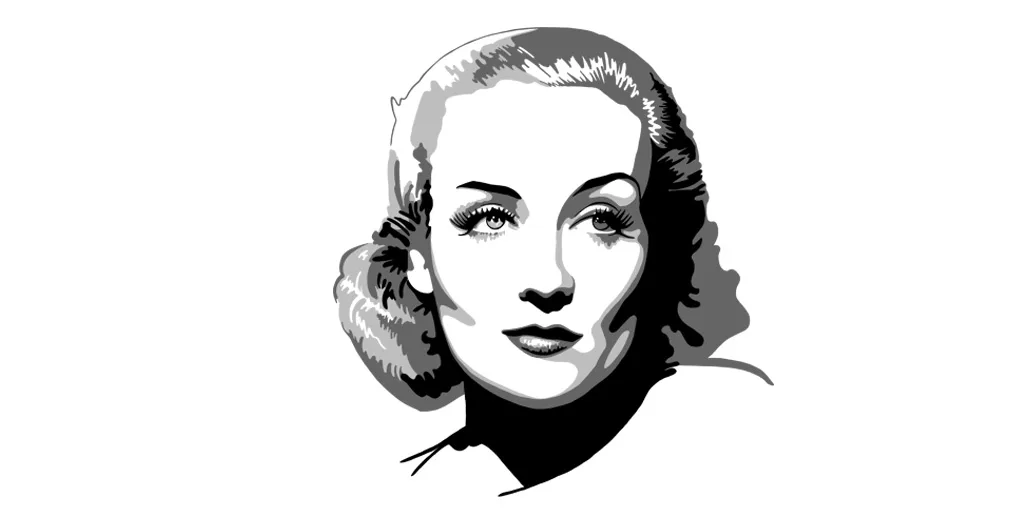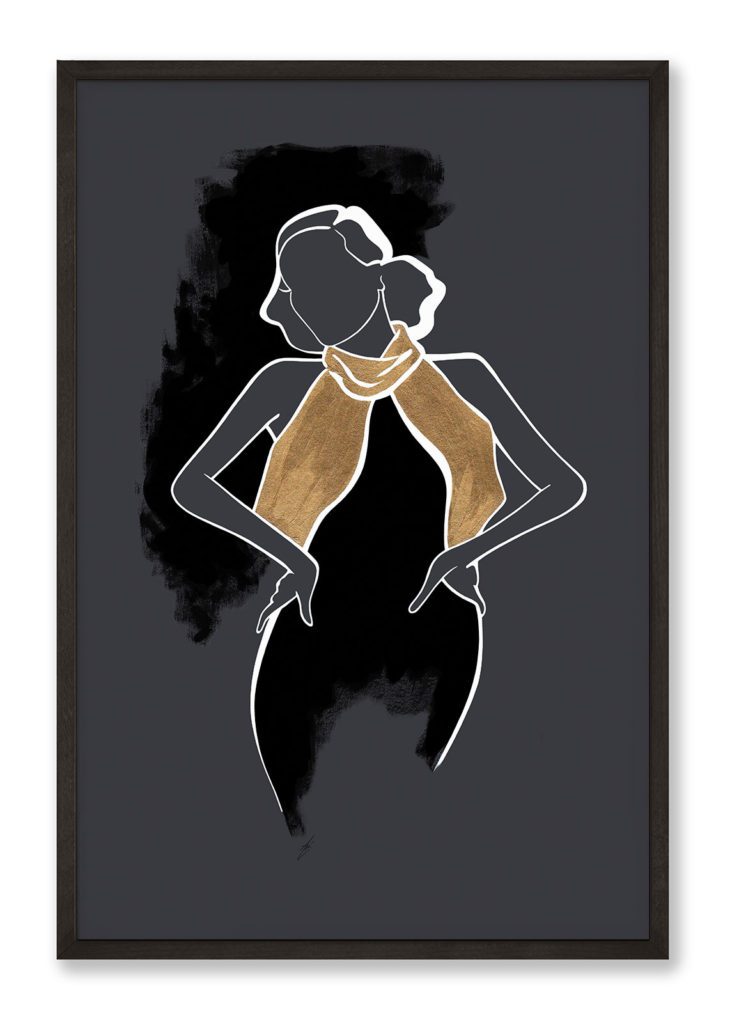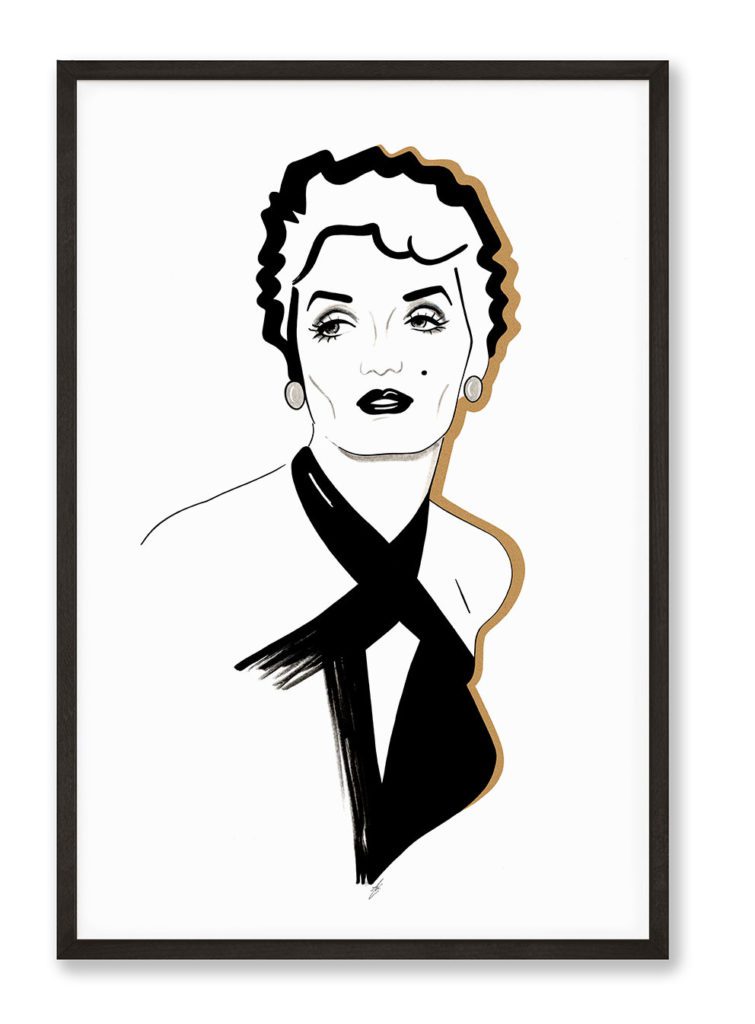Lana Turner
The Ultimate Old Hollywood Glamour Girl




Hi, I'm Kate!
What I am most passionate about is to inspire you to see that your life is your own and biggest masterpiece.
Lana Turner is a screen legend and a popular culture icon of Hollywood glamour. Her early fame as the „sweater girl“ is as much part of her public image as is the role of a glamorous femme fatale that she originated in The Postman Always Rings Twice as well as her seven marriages.
LISTEN TO THE PODCAST
SUBSCRIBE TO THE PODCAST
Beginnings
Lana Turner was actually born Julia Jean Turner on February 8, 1921 in Wallace, Idaho to parents of English, Irish, Scottish and Dutch origins. Her mother was a teenage mom with Julia being born four days before her mother turned 17. Her father had a dry cleaning service in Wallace and worked in the local silver mines. But money was always tight and the family moved to San Francisco in hopes of a better life and more opportunities. But then and there the parents separated. Unfortunately, when Julia was nine, her father was murdered. He was a bit of a gambler and had won some money at a game of craps or dice, had stuffed the winnings into his sock and went home. He was found bludgeoned to death with his shoe and sock missing. The murder was never solved and had a lasting impact on Turner who grieved his death profoundly.
As her mother was struggling financially, so Julia would sometimes live with friends so her mother could save some money, they moved often within the San Francisco Bay Area and would sometimes just live on crackers and milk. Her mother, a beautician was working up to 80 hours a week to support the two of them. Nevertheless, after the death of her father, Julia lived with a family in Modesto, California, but they physically abused her and treated her like a servant.
Although baptized a Protestant at birth, Turner begged her mother to convert to Roman Catholicism at the age of seven, totally thrilled by the rituals of the church. This would have an impact on her later life.
In 1936, her mother was advised to move to a drier climate because of respiratory problems and so she as well as 15 year-old Julia moved moved to Los Angeles.
Start in Show Business
Julia had shown interest in performing early on in life and had performed short dance routines at various occasions when she was as young as three years old. But she never followed these interests.
So, it was in 1936, the very year that she moved to Hollywood that Julia Turner was discovered by the publisher of The Hollywood Reporter, William R. Wilkerson. He introduced her to Zeppo Marx, the youngest of the Marx brothers who was working as an agent. He introduced her to Mervyn LeRoy, who would subsequently sign her to a contract with Warner Bros. for $50 a week. Mervyn LeRoy actually was the one suggesting to change her stage name to Lana Turner – a name that she would legally adopt several years later.
LeRoy cast a still brunette Turner in the movie They Won’t Forget in 1937. She only appeared on screen for a couple of minutes but that was enough to draw attention and she would become the „Sweater Girl“ from then onwards. A journalist would later write about that infamous appearance that Turner “made a sweater look like something Cleopatra was saving for the next visiting Caesar”
Just a couple of months later, Turner’s mentor, Melvyn LeRoy, changed to MGM as an executive. As Jack L. Warner did not see any potential in Lana Turner, he allowed LeRoy to take Lana and her contract with him to MGM, where Turner was hired on a $100/week contract. Her first movie for MGM was a supporting role in Love Find Andy Hardy which starred Mickey Rooney and Judy Garland. The performance by 17 year-old Turner convinced studio head Louis B. Mayer that Lana Turner indeed could be the next Jean Harlow, a new glamorous sex symbol.
Louis B. Mayer actually furthered Turner’s career by giving her the right roles, like the comedy Rich Man, Poor Girl , Dramatic School and Calling Dr. Kildare. Her first more glamorous role was in These Glamour Girls, which was followed up by Dancing Co-Ed the very same year. Turner received great reviews and the movies were commercial success, which led to Turner appearing on magazine covers.
Musical Films & WWII
In 1940, 19 year-old Turner made her first musical film Two Girls on Broadway opposite Joan Blondell and George Murphy, which was quite successful and lead her starring Ziegfeld Girl opposite James Stewart, Judy Garland and Hedy Lamarr. The movie was a smashing success and was, according to Turner herself, the first role that really got her interested in acting. The movie’s success lead to an increase of salary to $1,500/week for Turner, which today would be roughly $31,500.
Nevertheless, many of the movies that followed were not successes. She starred in a movie opposite Clark Gable for the first time in 1941, which proved a winning combination, although it fulled rumors about an affair between these two, which both vehemently denied.
And in 1942, WWII happened and Lana Turner became one of the most popular pin-up girls and did regular visits to troop events and area bases. Her likeness or name was even painted on the noses of US fighter planes in battle.
Subsequently, Turner starred in Marriage is a Private Affair as well as Slightly Dangerous. Critic and Screenwriter Anita Loos would say about Turner in the latter movie: “Lana Turner typifies modern allure. She is the vamp of today as Theda Bara was of yesterday. However, she doesn’t look like a vamp. She is far more deadly because she lets her audience relax.“
Turner then starred in 1945’s Week-End at the Waldorf, a remake of Grand Hotel, in which she played the role of the stenographer that previously had been held by Joan Crawford. The movie was a box office hit
Femme Fatale & Film Noir
And then The Postman Always Rings Twice happened in 1946. Lana Turner starred in the film noir opposite John Garfield and these two – as Life magazine would write – “take over the screen, [creating] more fireworks than the Fourth of July“. If you do not know the movie – in it, Lana Turner plays the young wife of a older diner owner. She falls for a drifter and the two decide to murder her husband. The movie was a huge success and made Turner known for more than glamorous sex symbol roles. She became the ultimate femme fatale and MGM started to take more chances with her and the roles she was given.
The next role was actually a replacement for Katherine Hepburn in Green Dolphin Street in 1947, which was quite a surprise or as Turner would put it herself: „”I’m about the most un-Hepburnish actress on the lot. But it was just what I wanted to do.“ It was the first Lana Turner movie that did not center on her looks and Turner loved it.
Her next two movies were straight out success – Cass Timberlane as well as Homecoming opposite Clark Gable. This movie marked the height of Lana Turner’s success. She was MGM’s most popular star and, on top of that, one of the ten highest-paid women in the US, earning $226,000 a year.
When she was cast as Lady de Winter in The Three Musketeers, Turner was able to renegotiate her contract with MGM and got a salary increase to $5,000/week, which would be roughly $65,000 today. The movie, which was Turner’s first Technicolor film became a huge box office success. After The Three Musketeers, Turner was put on temporary suspension – because she had failed to show up in time for filming – she actually missed three days of shooting because she was celebrating her marriage to Henry J. Topping Jr.
Her next movie A Life of Her Own bombed at the box office and MGM decided to rebrand Lana Turner yet again. They chose musicals as her next endeavor. But the two musical films she did were even worse than A Life of Her Own – one review by the St. Petersburg Times was “Without Lana Turner, Mr. Imperium … would be a better picture.“
That very year, because of her career and financial troubles. Lana Turner attempted suicide by slitting her wrists. But she was found in time by her manager and survived.
The Merry Widow, Turner’s next movie, was successful as well as 1952’s The Bad and the Beautiful. More movies followed between 1953 and 1955, including Latin Lovers, Flame and the Flesh and Betrayed, which garnered disastrous reviews – as was 1955’s The Prodigal, the epic production which only amounted to fair entertainment. Turner herself would call the costumes „atrocious“ and her lines „stupid“, to make matters worse, she did not get along well with her co-star Edmund Purdom. While The Sea Chase opposite John Wayne was a success, neither of her subsequent movies would be well received by circus or audiences. And thus, in spring 1956, MGM opted to not renew Lana Turner’s contract – after 18 years at the studio and $50 million that Turner had earned for the studio.
Life after MGM
Turner was delighted to be let go from the contract, feeling that MGM never really developed her roles and that she never got good enough material. So, the next project she was working on was 20th Century-Fox’s Peyton Place. The movie about a complicated mother-daughter relationships was an absolute smash hit with critics and audiences and Turner got nominated for the first and only time in her life for the Academy Award for Best Actress. As Turner had opted for percentages of the film’s overall earning instead of a steady fee, the film was also financially beneficial for her. She would do so for most of the movies that followed and was able to solidify her finances. 1959’s Imitation of Life was one of those major success – and Turner had wisely negotiated for 50% of the movies’s earnings instead of earning any salary. Most of her subsequent movies would not become a major success anymore. There was Portrait in Black opposite Anthony Quinn and Sandra Dee, Bachelor in Paradise with Bob Hope, Who’s Got the Action? opposite Dean Martin and By Love Possessed, which was actually the first in-flight movie to be shown at a schedule flight to TWA’s first class passengers.
Lana Turner had her last major lead role in the 1966 drama Madame X, which according to some was one of her best performances and many thought she would be nominated for an Academy Award, which she wasn’t. Her next movie roles were of no great impact, like The Big Cube, in which she plays an heiress who unwittingly is given LSD as her stepdaughter wants to drive her insane, Harold Robbins’ The Survivors for TV, which was cancelled mid-season after a 15 week run, the horror movie Persecution, romantic comedy Bittersweet Love as well as 1980’s comedy horror movie Witches’ Brew, her final appearance in a feature film.
Theater & TV
With her movie career slowly fading, Lana Turner turned to the theater instead. She had started to transition to the stage in the early 1970’s a with a production of Forty Carats, followed by The Pleasure of His Company, a tour of Bell, Book and Candle, the original play Divorce Me, Darling and the murder-mystery play Murder Among Friends, which would become her last engagement on stage touring the US in the first half of 1982.
Her role on Falcon Crest in 1981 got considerable media coverage and was a ratings success, although Turner would only appear in six episodes. Her last appearance on screen was a guest role on The Love Boat in 1981.
Health & Death
Lana Turner did not lead the healthiest of lives. She was a drinker and smoker for most of her life. During her time at MGM all photographs with her holding a cigarette were airbrushed to not damage her public image. Turner would eventually stop drinking when she was in her early sixties due to severe health concerns. At one point she was weighing only 95 pounds and was missing performances in her theatre engagements. But, she was unable to quit smoking and would eventually develop throat cancer, which was diagnosed in 1992. She would die from complications of the disease on June 29, 1995 at the age of 74 with her daughter Cheryl by her side.
Lana Turner’s remains were cremated, but what exactly happened to her ashes is not known. Some claim that her daughter still has the urn with the ashes inside it, others claim that they have been scattered in the ocean – although the ocean and the location are unknown.
Daugher Cheryl would later challenge Turner’s will as Turner had given her and her partner Joyce LeRoy only $50,000 and the majority of her estate to her maid Carmen Lopez Cruz who had been with Turner for 45 years and had tended to her during her illness and last years. But most of the inheritance was consumed by probate costs, legal feed and medical expenses.
Relationships
Artie Shaw (husband #1) – In 1939, 18 year-old Lana Turner and Artie Shaw, who was ten years her senior, met on the set of Dancing Co-Ed, in which they both starred. They decided to get married right after their first date and eloped to Las Vegas. The marriage lasted only four months but resulted in a pregnancy. Turner chose to have an abortion, which – of course – was given to the press quite differently, talking about having Turner hospitalized for exhaustion.
Joseph Stephen „Steve“ Crane (husband #2) – 21 year-old Lana Turner met Steve Crane, who was five years older than her, at a dinner party in Los Angeles. And, again, after one week of dating, Turner eloped with him to Las Vegas. The marriage was annulled four months later as Crane’s former marriage had not been properly divorced. But upon discovering that she was pregnant, Turner remarried Crane a couple of months later. Her daughter Cheryl was born in July 1943 with near-fatal erythroblastosis fetalis, which resulted from Turner’s blood type Rh-negative. Crane and Turner divorced after two years of marriage. Turner would cite Crane’s gambling and unemployment as primary reasons.
Tyrone Power – Lana Turner fell in love with Tyrone Power during the filming of Green Dolphin Street in 1946 and got pregnant yet again. She opted for an abortion though. She would later say that Power was the love of her life.
Frank Sinatra – It was also during the filming of Green Dolphin Street that Turner had an affair with Sinatra
Howard Hughes – … and with Howard Hughes for 12 weeks in late 1946
Henry J. “Bob” Topping Jr. ( usband #3) – 27 year-old Lana Turner married millionaire socialite Henry J. “Bob” Topping Jr. in April 1948. In 1949 she became pregnant with a boy but went into premature labor and lost the child.
Fernando Lamas – During the filming of The Merry Widow in 1952, 30 year-old Turner started an affair with co-star Fernando Lamas. Apparently he physically assaulted her, which led MGM to end his contract after the film was completed.
Lex Barker (husband #4)– Also in 1952, Lana Turner started dating Lex Barker and married him the year after in September 1953. Three years into the marriage, she was pregnant again and gave birth to a stillborn girl seven months into the pregnancy. She divorced Barker in 1957, when her daughter Cheryl, then 14 years-old accused Barker of molesting and raping her repeatedly. Apparently Turner confronted Barker with the accusations and then forced him out of the house on gunpoint.
Johnny Stompanato – Lana Turner’s affair with mobster Johnny Stompanato is probably the best-known of her relationships as well as the most notorious. Micky Cohen associate Stompanato started aggressively courting Turner during the filming of The Lady Take a Flyer in 1957 – but used a different name, John Steele, to not frighten her. Turner got intrigued and started dating him, but when she found out who he was she actually wanted to break it off – but didn’t. Instead they carried on a relationship for about a year, which was quite volatile, filled with violence, physical abuse and reconciliations. Turner would later claim that once Stompanato even drugged her to take nude photographs while she was unconscious – probably in order to use as blackmail later on. During the filming of Another Time, Another Place in London, Stompanato would visit Turner, but Turner would not allow him on set – which led to Stompanato at one point to choke Turner. Turner would turn to Scotland Yard to have Stompanato deported to avoid further confrontations. Stompanato got wind of it and showed up on set with a gun – which Turner’s co-star Sean Connery grabbed out of Stompanato’s hand and subsequently twisted Stompanato’s wrist so badly that the latter fled the scene. Stompanato was escorted by the police to the airport to fly back to the US.
And then came the Oscar’s 1958, which Turner attended being nominated for Peyton Place and presenting the Best Supporting Actor Award. Turner attended the event without Stompanato which angered him to – so he awaited her at home and assaulted Turner upon her return. During their violent fight, Stompanato threatened to kill Turner, her mother and her daughter Cheryl. Cheryl, who had been in the house the whole time was in fear for her mom’s life, grabbed a kitchen knife and went to the room the two were fighting in. At that point, Turner tried to push Stompanato out of the room and Cheryl stabbed him. He died on the scene.
Of course, the press had a true field day with a celebrity and a teenager involved in a murder. The incident was ruled a justified homicide as Cheryl had acted out of fear that her mother would be killed. The juvenile court was concerned thought whether Cheryl received proper parental supervision and was later put in care of her grandmother and ordered to visit a psychiatrist together with her parents.
Frederick “Fred” May (husband #5) – Lana Turner married her fifth husband, Frederick May in November 1960 at the age of 39. May was a rancher and part of the May department-store family, whom Turner met at a beach party in Malibu shortly after her success of Imitation of Life. They lives on his ranch in Chino, California, tending to animals and enjoying life. They would divorce a short two years later, but stayed friends for the remainder of Turner’s life.
Robert Eaton (husband #6) – Three years later, in 1965, Lana Turner met and married Hollywood producer and business man Robert Eaton – she was 44 years old, Eaton 34. They would divorce in April 1969 after four years of marriage when Turner discovered that Eaton had cheated on her.
Ronald Pellar (husband #7) – Only weeks after the divorce from Eaton was finalized, Turner married again. Ronald Pellar was a nightclub hypnotist that Turner had met at a disco. After only six months, Turner realized that Pellar had stolen money and jewelry from her. She filed for divorce and would remain husband-less for the rest of her life.
One of her most famous quotes is the following: “My goal was to have one husband and seven children, but it turned out to be the other way around.“
Friendships
Judy Garland – Lana Turner and Judy Garland starred together in Ziegfeld Girl and became lifelong friends. They even lived in houses next to each other in the 1950s.
Screen Persona & Legacy
Lana Turner was actually dark-haired and appeared in her early movies with her natural auburn locks. But she colored her hair platinum blonde for 1941’s Ziegfeld Girl, and would keep that look for the remainder of her life. As MGM wanted to build Turner into the next Jean Harlow, it is understandable that they took this step.
Interesting about Turner’s screen persona is that it hardly differed from the private Turner. At one point the image of Turner and her roles collapsed into one. Movie roles like the ones in Peyton Place, Imitation of Life, Madame X or Love Has Many Faces strongly resembled Turner’s real life, her struggles with her daughter as well as a single mother, court trials and marriages. Columnist Dorothy Kilgallen already wrote in 1946 about Turner: „Lana Turner is a super-star for many reasons but chiefly because she is the same off-screen as she is on. Some of the stars are magnetic dazzlers on celluloid and ordinary, practical, polo-coated little things in private life. Not so Lana. No one who adored her in movies would be disappointed to meet her in the flesh. The flesh is the same. The biography is as colorful as any plot she has ever romped through on screen. The clothes she wears are just like the clothes you pay to see her in on Saturday night at the Bijou. The physical allure is just as heavy when she looks at a headwaiter as when she looks at a hero.“
Apart from her very glamorous image, Turner was also one of the first female Hollywood stars who would very publicly launch into relationships and affairs – something only male stars usually emerged from unscathed. Turner was one of the few glamorous female Hollywood stars women loved to adore.
Famed Hollywood author Jeanine Basinger considers Turner the “epitome of the Hollywood machine-made stardom“. Because Hollywood cashed in on Turner’s private troubles.
Style
Lana Turner has often been credited as being one of the most glamorous movie stars of all times. It was an image that Turner herself intentionally created as she once told a journalist: “Forsaking glamour is like forsaking my identity. It’s an image I’ve worked too hard to obtain and preserve.“ Turner would always be camera-ready, wearing jewelry and makeup even when lounging in sweatpants. She had a considerable wardrobe and almost 700 pairs of shoes. Her favorite designers were Salvatore Ferragamo, Jean Louis, Helen Rose and Nolan Miller. According to her daughter Cheryl, Turner put obsessive attention to details when it came to her outfits and glamorous appearance – and apparently dressmakers would regularly storm out during dress fittings.
With all my love!
xx






